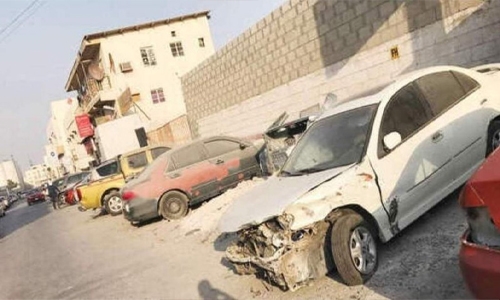Stop clogging Bahrain streets with junk cars
TDT | Manama
The Daily Tribune – www.newsofbahrain.com
Junk vehicles, covered in rust, cobwebs and dust, piling up in neighbourhoods and parking lots, and with “for sale” tags are a common sight on the streets here, the latest data on violations released by municipal ‘Mobile Monitoring System’ reveals.
The system identifies placing or leaving dilapidated vehicles in the streets, sidewalks, squares, or public squares as the most common violations detected during 2020.
Overall, the ‘Mobile Monitoring System’ recorded a 141 per cent jump to 2,444 violations in 2020 from 1,728 recorded a year ago, said Undersecretary for Municipal Affairs at the Ministry of Works, Municipalities Affairs and Urban Planning, Sheikh Muhammad bin Ahmed Al Khalifa.
Muharraq municipality topped the count with 834 violations during 2020.
Closely following was the northern region with 746 and Southern with 473 violations.
Capital recorded the lowest, with 391 violations in 2020.
The ‘Mobile Monitoring System’ launched in January 2020 works by providing inspectors seamless access to an integrated database on violations through an electronic portal.
“The Public Cleanliness Law, the Ministerial Decision regarding the registration of communal housing and other regulations, legislation and laws in force” are put into practice with the help of this system,” said Sheikh Muhammad.
In this regard, he pointed out that the most common violations were regarding the Public Cleanliness Law No. (10) of 2019 and the Public Road Works Law No. (2) of 1996.
Conducting road works without a permit, illegally occupation of streets, placing ‘for sale’ or ‘for lease’ tagged vehicles on public squares, and other places, washing vehicles, or engaging in similar work leading to runoff water ending up on streets are the other violations detected.
On the most monitored violations by the Control and Inspection Department, he said, “Those violations were related to the Building Regulation Law No. (13) for the year 1977 and law No. (28) for the year 2009 related to the regulatory requirements for reconstruction.
The most important violation in this regard was the unauthorised additions to existing buildings.”
Related Posts

